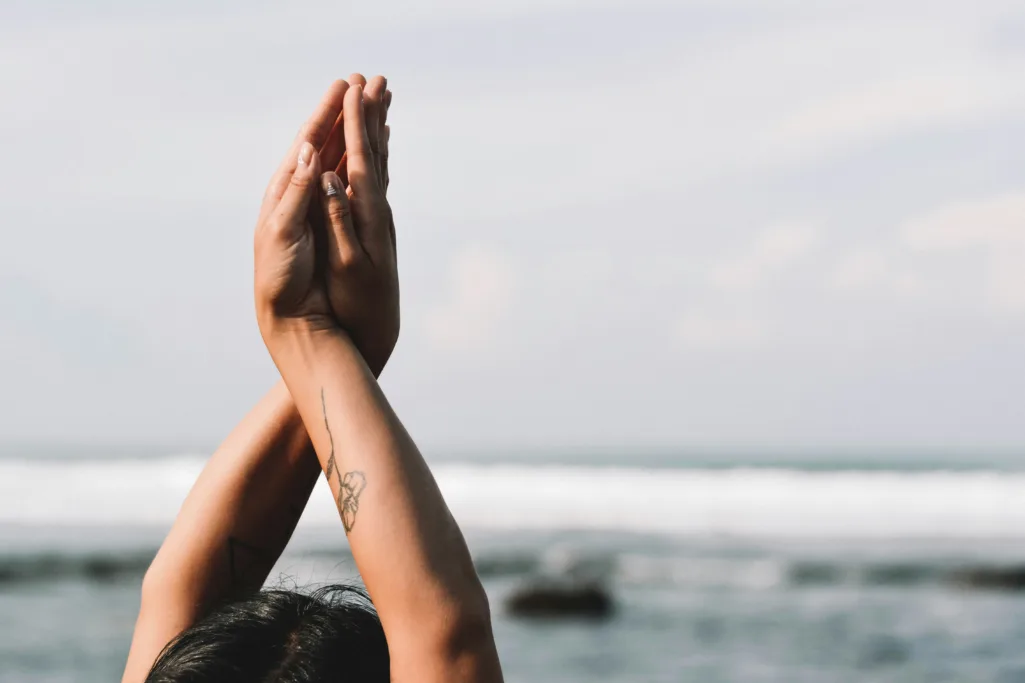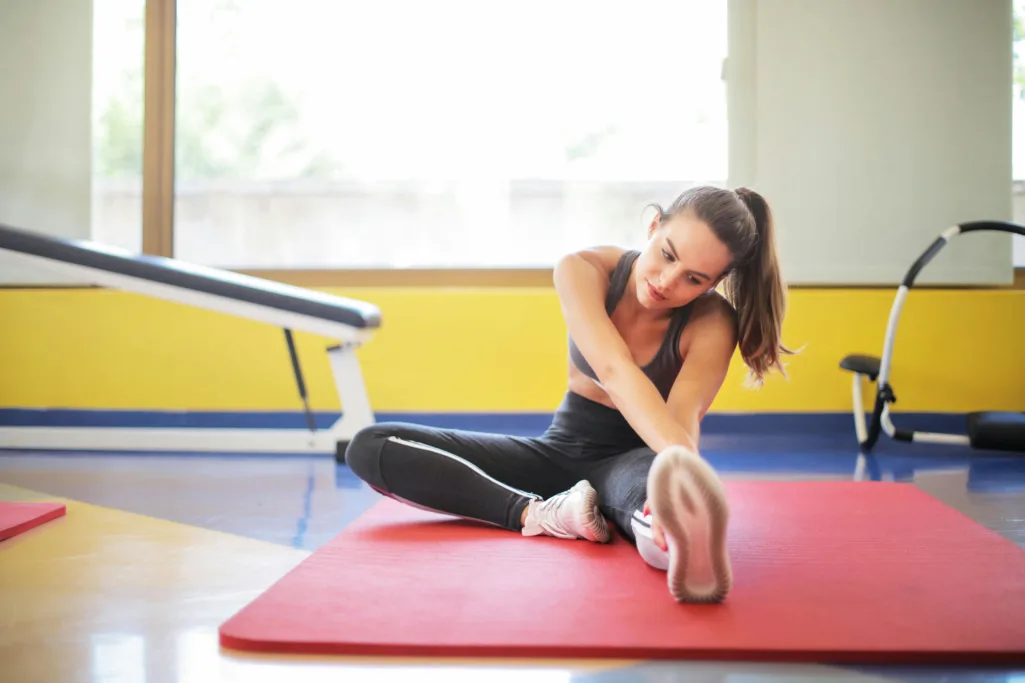Yoga & Pilates
Yoga vs. Pilates: Choosing the Right Practice for Your Body

Did you know that yoga and Pilates are two of the most popular low-impact workouts in the world? In fact, millions of people around the globe have embraced these practices for their numerous health benefits.
Key Takeaways:
- Yoga and Pilates are low-impact workouts that use bodyweight resistance.
- Pilates focuses on small movements that target core muscles, while yoga combines physical activity with mindful focus.
- Both yoga and Pilates can be done with minimal equipment and require mental focus.
- Pilates can increase muscle strength and endurance, improve flexibility and posture, and lead to better balance.
- Yoga can improve overall wellness, reduce stress, and have positive effects on various medical conditions.
Table of Contents
Pilates Benefits
Pilates, developed by Joseph Pilates as a rehabilitation method, offers a multitude of benefits for both the body and mind. This low-impact workout focuses on small movements that engage the core muscles while incorporating controlled breathing techniques.
By regularly practicing Pilates, you can experience a wide range of advantages that contribute to your overall well-being.
Increase Muscle Strength and Endurance
Pilates is renowned for its ability to strengthen and tone muscles throughout the body. The precise movements and emphasis on core engagement help build muscle strength and endurance, leading to a more defined physique and improved physical performance.
Improve Flexibility and Posture
Through a combination of stretching and controlled movements, Pilates enhances flexibility and improves overall posture. By targeting specific muscle groups, such as the back, hips, and shoulders, Pilates helps correct imbalances and promotes proper alignment, resulting in an improved posture that not only looks better but also reduces the risk of pain and injury.
Better Balance
Pilates exercises focus on developing core stability, which is vital for maintaining balance and stability. By strengthening the deep abdominal muscles, as well as the muscles around the spine and pelvis, Pilates helps improve your balance, coordination, and control over movements, allowing you to move with confidence and grace.
Decreased Joint Pain
Pilates is particularly beneficial for those dealing with joint pain, as it provides a gentle yet effective way to alleviate discomfort. By strengthening the supporting muscles around the joints, Pilates can reduce strain on the joints, leading to decreased pain and improved mobility. It is often recommended for people with conditions such as arthritis, joint injuries, and back pain.
Overall, Pilates offers a holistic approach to fitness, combining physical exercise with mindful breathing and concentration. Embracing the Pilates method can lead to numerous positive changes in your body and mind, promoting a healthier and more vibrant lifestyle.
Yoga Benefits

Yoga has roots in ancient practices and combines physical poses with breathing techniques. It focuses on proper relaxation, exercise, breathing, diet, and positive thinking and meditation. The benefits of yoga have been extensively studied and include both physical and mental benefits.
Regular yoga practice can help increase overall wellness and contribute to a healthier lifestyle. It has been proven to have positive effects on various medical conditions, such as anxiety, depression, multiple sclerosis, arthritis, respiratory conditions, high blood pressure, chronic pain, and type 2 diabetes.
By incorporating yoga into your routine, you can experience a wide range of benefits. It provides not only a form of exercise but also an opportunity for proper relaxation and stress reduction. Yoga helps improve flexibility, strength, and balance. It also aids in better focus and mental clarity.
Research has shown that yoga can be an effective complementary therapy for mental health conditions, such as anxiety and depression. It promotes positive thinking and meditation, which can help reduce stress and improve overall well-being.
Furthermore, yoga has been found to have a positive impact on various chronic health conditions. It can alleviate symptoms and improve the quality of life for individuals with conditions like multiple sclerosis, arthritis, respiratory disorders, high blood pressure, chronic pain, and type 2 diabetes.
Overall, yoga offers a holistic approach to health and wellness. Its combination of physical activity, breathing techniques, and mindful practices make it a powerful tool for improving both the body and the mind.
| Yoga Benefits | Medical Conditions |
|---|---|
| Increase overall wellness | Various medical conditions, including anxiety, depression, multiple sclerosis, arthritis, respiratory conditions, high blood pressure, chronic pain, and type 2 diabetes |
| Improve flexibility and balance | Arthritis, chronic pain, multiple sclerosis |
| Reduce stress and promote relaxation | Anxiety, depression |
| Enhance mental clarity and focus | All individuals |
| Alleviate symptoms | Various chronic health conditions |
Similarities between Yoga and Pilates
Yoga and Pilates share several similarities, making them appealing options for individuals looking for low-impact workouts that provide numerous health benefits. These similarities include:
- Low-impact workouts: Both yoga and Pilates are gentle on the joints, making them suitable for individuals with physical limitations or those seeking a workout with minimal strain on the body.
- Breath control: Both practices emphasize the importance of breath control and proper breathing techniques. By focusing on breathing, practitioners can enhance their mental and physical well-being.
- Mental focus: Yoga and Pilates require mental focus and concentration. By staying present in the moment and focusing on the movements, individuals can achieve a deeper mind-body connection.
- Flexibility: Both practices can improve flexibility and enhance the overall range of motion. Regular practice can lead to increased flexibility in the muscles and joints, promoting better posture and reducing the risk of injuries.
- Stress reduction: Yoga and Pilates provide an opportunity for stress reduction and relaxation. The combination of physical movement, breath control, and mental focus can help calm the mind and promote a sense of well-being.
These shared characteristics make yoga and Pilates versatile practices that can be tailored to different fitness levels and goals. Whether you’re looking to improve flexibility, build strength, or simply reduce stress, both yoga and Pilates offer unique benefits for your mind and body.
Key Differences between Yoga and Pilates
In comparing Yoga and Pilates, it’s important to note that while they share some similarities, there are distinct differences that set them apart.
The focus of Workouts:
Yoga provides a full-body, balanced workout, incorporating a wide range of movements and postures. It emphasizes standing postures, which help develop strength, flexibility, and balance throughout the entire body. In contrast, Pilates primarily focuses on core strength and stability. The movements in Pilates engage the core muscles and often involve the limbs, resulting in improved core strength and overall stability.
Approach to Movement:
One significant difference between Yoga and Pilates lies in the approach to movement. Yoga poses are typically held for longer durations, allowing for deep stretching and increased flexibility. On the other hand, Pilates involves continuous movement, flowing from one exercise to another. This rhythmic motion helps build endurance, coordination, and overall body control.
Emphasis on Relaxation:
Relaxation plays a key role in Yoga practice, with poses specifically designed to promote physical and mental relaxation. Yoga incorporates breathing techniques and mindfulness to reduce stress and enhance relaxation. On the other hand, Pilates is more focused on building strength and stability. While both practices offer mental benefits, Yoga places a stronger emphasis on relaxation.
In Summary:
Yoga: Full-body workout, standing postures, flexibility, emphasis on relaxation.
Pilates: Core strength focus, continuous movement, endurance, stability.
| Yoga | Pilates |
|---|---|
| Full-body workout | Core strength focus |
| Standing postures | Continuous movement |
| Emphasis on relaxation | Endurance and stability |
Considerations for Choosing Yoga or Pilates

When deciding between yoga or Pilates, it’s essential to take into account your health conditions, flexibility, mobility, and physical limitations. Each practice offers unique benefits and modifications that can be tailored to your specific needs.
If you have health conditions or physical limitations, it’s crucial to choose a practice that is safe and suitable for you. Yoga and Pilates can be modified to accommodate different fitness levels and limitations, allowing you to work within your comfort zone while still reaping the benefits.
Yoga: If you have good flexibility and mobility, yoga can be a fantastic choice. It involves various poses and movements that can improve strength, balance, and flexibility. However, if you have limited flexibility or mobility, modifications can be made to make it accessible for you.
Pilates: Pilates is known for its focus on core strength, stability, and overall body conditioning. It can be an excellent option for older adults or individuals recovering from an injury, as it is generally low-impact and emphasizes controlled movements. Pilates can also help improve flexibility and mobility through its specific exercise repertoire.
Consulting with an experienced instructor is highly recommended when choosing between yoga or Pilates, especially if you have specific health concerns or physical limitations. They can guide you in selecting the practice that best aligns with your goals and helps you work within your capabilities, ensuring a safe and effective workout.
Safety Considerations
When practicing yoga or Pilates, prioritizing safety is crucial. Proper form and alignment, along with modifications for individual needs, can help prevent injuries and ensure a safe and effective workout. Whether you’re dealing with back or neck pain, respiratory problems, physical restrictions, or even pregnancy, taking necessary precautions is essential.
Consult with a Doctor
If you have any pre-existing health conditions or concerns, it’s always recommended to consult with a healthcare professional before starting a new exercise program, including yoga or Pilates. They can provide personalized guidance and advice based on your specific medical history and help determine what is safe and appropriate for you.
Modifying for Back and Neck Pain
Individuals with back or neck pain should approach yoga and Pilates with caution. Certain poses or movements may aggravate existing pain or cause further discomfort. It’s important to listen to your body and work within your limitations. Consider attending private lessons or working with an experienced instructor who can provide proper guidance and offer modifications tailored to your condition.
Respiratory Problems
If you have respiratory problems such as asthma or chronic obstructive pulmonary disease (COPD), it’s crucial to be mindful during your practice. Certain breathing techniques or strenuous exercises may not be suitable for your condition. Always listen to your body and consult with a healthcare professional or a qualified yoga or Pilates instructor who can guide you in modifying your practice accordingly.
Pregnancy
Pregnant women should take extra care and consult with their healthcare provider before starting or continuing a yoga or Pilates practice. While these practices can be beneficial for overall well-being during pregnancy, certain poses and movements may need to be modified or avoided to ensure the safety of both the mother and the baby. Attending prenatal yoga or Pilates classes or seeking private lessons from a certified instructor who specializes in prenatal fitness can provide the necessary guidance.
Physical Restrictions and Modifications
Every individual has unique physical limitations or restrictions. It’s important to work within your capabilities and modify poses or exercises to suit your needs. A qualified instructor can help you learn proper modifications and ensure you are practicing safely. Private lessons can be particularly helpful for beginners or those with specific physical limitations.
To reduce the risk of injury and maximize the benefits of yoga or Pilates, remember to:
- Focus on proper form and alignment.
- Listen to your body and work within your limits.
- Be aware of any pain or discomfort and adjust accordingly.
- Seek guidance from a qualified instructor or healthcare professional.
| Condition | Guidelines |
|---|---|
| Back or Neck Pain | Be mindful of breathing techniques and intensity, and consult with a healthcare professional or instructor. |
| Respiratory Problems | Find modifications that suit your needs, work with a qualified instructor, and consider private lessons. |
| Pregnancy | Consult with a healthcare provider, attend prenatal classes, and modify or avoid certain poses. |
| Physical Restrictions | Find modifications that suit your needs, work with a qualified instructor, consider private lessons. |
By following these safety considerations and seeking proper guidance, you can make yoga or Pilates a safe and enjoyable practice that supports your overall health and well-being.
Conclusion
In conclusion, both yoga and Pilates offer a wide range of benefits for your body and mind. Yoga is known for its ability to improve flexibility, balance, and overall wellness. Through a combination of physical poses and breathing techniques, yoga can help you enhance your strength, mobility, and mental well-being. On the other hand, Pilates focuses on increasing strength, improving posture, and enhancing core stability. With its emphasis on controlled movements and engaging the core muscles, Pilates can help you build a strong foundation.
The choice between yoga and Pilates ultimately comes down to your individual preferences and goals. If you are looking to improve your flexibility, achieve a sense of inner calmness, and promote overall wellness, then yoga may be the right practice for you. On the other hand, if you are seeking to build strength, improve your posture, and enhance core stability, then Pilates might be the ideal choice.
It’s important to listen to your body and choose the practice that feels right for you. Consulting with professionals, such as certified instructors or healthcare providers, can also provide guidance tailored to your specific needs and physical limitations. Keep in mind that both yoga and Pilates can be modified to accommodate different fitness levels and body types, so don’t be afraid to explore and adapt the practices to suit your unique preferences and requirements.
FAQ
What are the benefits of Pilates?
Pilates can increase muscle strength and endurance, improve flexibility and posture, lead to better balance, and result in decreased joint pain. It can also be beneficial for those with conditions such as arthritis, urinary incontinence, respiratory conditions, joint injuries, and back pain.
What are the benefits of yoga?
Yoga can increase overall wellness and have positive effects on medical conditions such as anxiety, depression, multiple sclerosis, arthritis, respiratory conditions, high blood pressure, chronic pain, and type 2 diabetes. It focuses on proper relaxation, exercise, breathing, diet, and positive thinking and meditation.
What are the similarities between yoga and Pilates?
Both yoga and Pilates are low-impact workouts that can be done with minimal equipment. They both emphasize the importance of breath control and proper breathing techniques. They require mental focus and can help reduce stress. Both yoga and Pilates can improve flexibility and can be tailored to different fitness levels.
What are the key differences between yoga and Pilates?
Yoga is more of a full-body, balanced workout with a focus on standing postures. Pilates, on the other hand, emphasizes core strength and stability with movements that involve the limbs. Yoga often involves holding poses, while Pilates involves continuous movement. Yoga also has a strong emphasis on relaxation, while Pilates is more focused on strength and stability.
What should I consider when choosing between yoga and Pilates?
When choosing between yoga or Pilates, it’s important to consider your health conditions and physical limitations. Yoga may require more flexibility and mobility, while Pilates can be a suitable option for older adults or those recovering from an injury. Both practices can be modified to accommodate different fitness levels and limitations. It’s advisable to consult with an instructor to determine which practice is best for your body’s needs.
What safety considerations should I keep in mind when practicing yoga or Pilates?
Individuals with back or neck pain, respiratory problems, or pregnancy should modify their workouts and consult with a doctor before starting. Proper form and alignment are key to avoiding injury, and private lessons or guidance from a certified instructor may be beneficial, especially for beginners.



